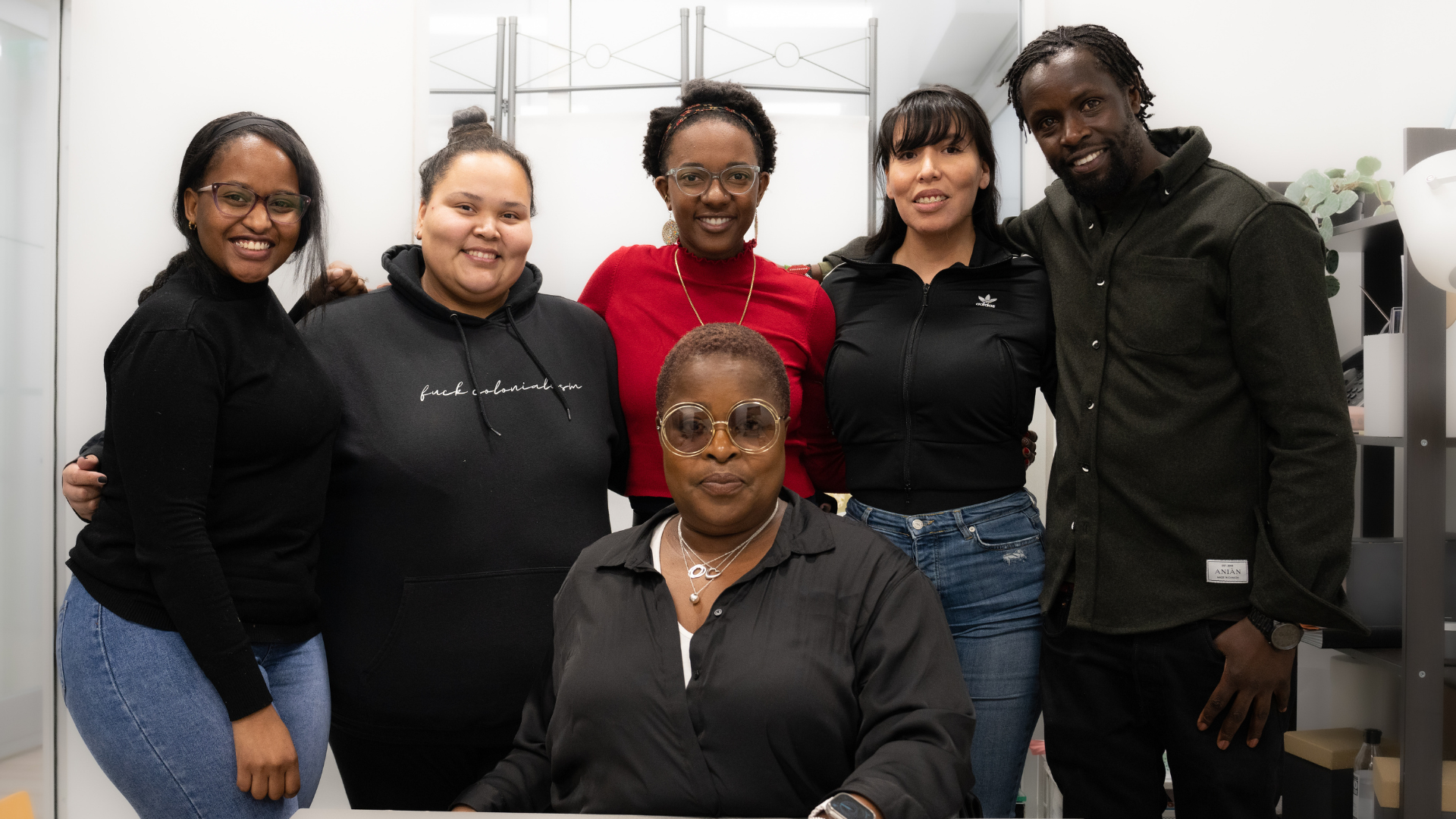Government anti-racism grants help underfunded grassroots Black-led organizations in B.C.
Why It Matters
Black-led and Black-serving organizations are often underfunded and unable to grow. Open government grants through Multicultural and Anti-Racism Programs can help grassroots organizations reach their goals.

This independent journalism is made possible by the Future of Good editorial fellowship covering inclusion and anti-racism in the social impact world, supported by the World Education Services (WES) Mariam Assefa Fund. See our editorial ethics and standards here.
It can be challenging for some Black-led organizations to receive funding for anti-racism and Black-serving programs.
“Sometimes these topics don’t attract the interest of all funders,” said Pascaline Nsekera, director of operations and services at Great Light Healing Community Services Society, a grassroots family services nonprofit in Surrey, B.C.
That is why Nsekera was grateful to receive an open grant from the federal government’s Multicultural and Anti-Racism Program for her organization’s youth-led Black History Month event called Raising the Bar.
“I applied because it’s open for events that target anti-racism,” Nsekera said.
“This event will give voice to the youth. It’s a way also for non-profits and policymakers to hear how best to serve them.”
Great Light Healing Community Services Society offers outreach, youth services, family and children development, career and employment, health and wellness, immigrant settlement services and crisis management.
About 70 per cent of the Black-led group’s clientele is Black or racialized.
Resources can sometimes feel stretched thin for a small organization, so applying for grants becomes challenging.
“Grant writing is like a full-time job. It’s not easy to do for a small organization,” Nsekera said.
She was pleasantly surprised her organization received $50,000 from the federal government for its Black History Month event, funds that may have been difficult to secure if it was not an open grant.
For Tinthi Tembo, co-founder of BIPOC Creative Association in Vancouver, funding for Black-led organizations appears to be dwindling.
The BIPOC Creative Association is a collective of Black, Indigenous and racialized artists in the metro Vancouver area. It helps creatives grow their businesses, write grants, and engage in workshops to help them thrive.
As a justice-oriented collective focused on providing a safe space for marginalized artists, Tembo said it can be challenging to acquire sustainable funding.
Grants don’t meet grassroots organizations’ needs
Tembo’s MLA told her about the province’s Multicultural and Anti-Racism program a few years ago, so she applied.
The provincial government’s fund has existed in one form or another since 1996. Still, it gave out an astounding number of grants in 2020 as the Black Lives Matter movement took hold of North American consciousness and prompted institutions to snap into action.
Tembo said BIPOC Creative Association received $10,000 to deliver a program that offered business development, grant writing, and physical and psychological safety skills for BIPOC creatives.
“We took it as an opportunity for them to advance their skill sets to better themselves,” Tembo said. On average, between 40 and 50 people attended each of the ten weekly sessions offered through the program.
Within two years, the funding was reduced and then disappeared.
“We didn’t get funding again,” Tembo said. “We all have jobs, and we don’t have time to apply for grants. That’s why we haven’t been able to continue the program.”
“Core funding and recipient numbers for the Multiculturalism and Anti-Racism Grant have remained consistent for the past several years,” a spokesperson for the province wrote in an email to Future of Good.
The province also does not disclose why an organization did not receive funding, so it is unclear why the BIPOC Creative Association didn’t get more grants.
The federal government’s grant came through for Tembo.
Her organization secured funding for building retrofits and equipment purchases through the federal government’s Multicultural and Anti-Racism Program’s capacity-building fund.
Because the fund is so specific, Tembo said her organization still struggles to offer relevant programming despite having an updated space and equipment.
The BIPOC Creative Association was formed from a Canada Day protest in 2020. Black and Indigenous artists came together to protest in solidarity.
The BIPOC creative community wanted to see the camaraderie and kinship of those anti-Canada Day events formalized, so the creative association was incorporated.
Despite the community’s need for a safe space for marginalized artists to grow, Tembo said keeping the doors open has been a struggle.
“Our hopes were to amplify the voices of Indigenous and Black folks through their crafts,” Tembo said.
Grassroots organizations like theirs don’t get the kind of support or funding that other organizations do, she added.
Black-led and Black-serving organizations underfunded
Tembo’s experience is not uncommon. A report published in 2020 called “Unfunded” revealed that Canadian philanthropy underfunded Black-led and Black-serving nonprofits.
For every $100 granted, only seven cents went to Black-led organizations, and only 70 cents went to Black-serving organizations, according to an analysis of 2017 and 2018 funding history from 15 of the country’s top community foundations.
The report notes that funding is increasingly difficult for smaller, grassroots organizations, such as Great Light Healing Community Services Society and BIPOC Creative Association, to acquire.
It also notes that the federal government’s Supporting Black Canadian Communities Initiative, the fund which provided money for the BIPOC Creative Association to purchase equipment, was a step in the right direction.
But Tembo said the grants are too specific, focusing on Black History Month events or for retrofits and equipment, and not catering to her organization’s programming needs.
According to the report, more collaboration between government and philanthropic organizations is needed to ensure Black-led and Black-serving organizations are adequately funded and able to grow.
Tembo believes the group’s Black Panther-inspired, justice-oriented focus makes them a difficult sell to funders.
Prioritizing equity and anti-racism has fallen out of favour since the height of the Black Lives Matter movement, she said.
“We need to see more funding allocated to these issues,” Tembo said.
“We need to see big amounts. There is a lack of trust.”
Tembo believes there is little-to-no systemic dismantling happening in the philanthropic world or government agencies, but they are looking at other ways to find cash.
“We’re hopeful. We’re trying some new strategies and fundraising,” Tembo said.

